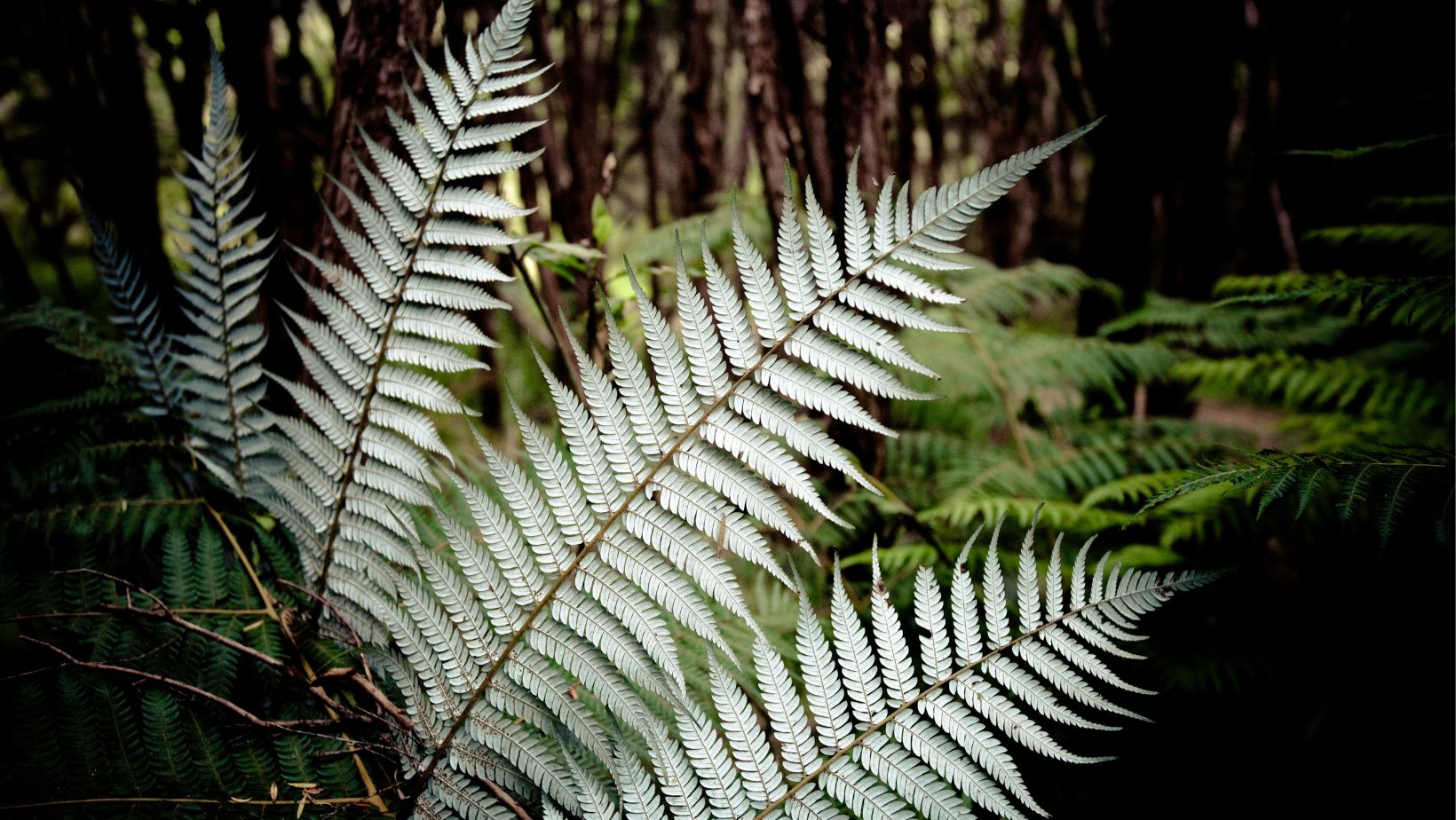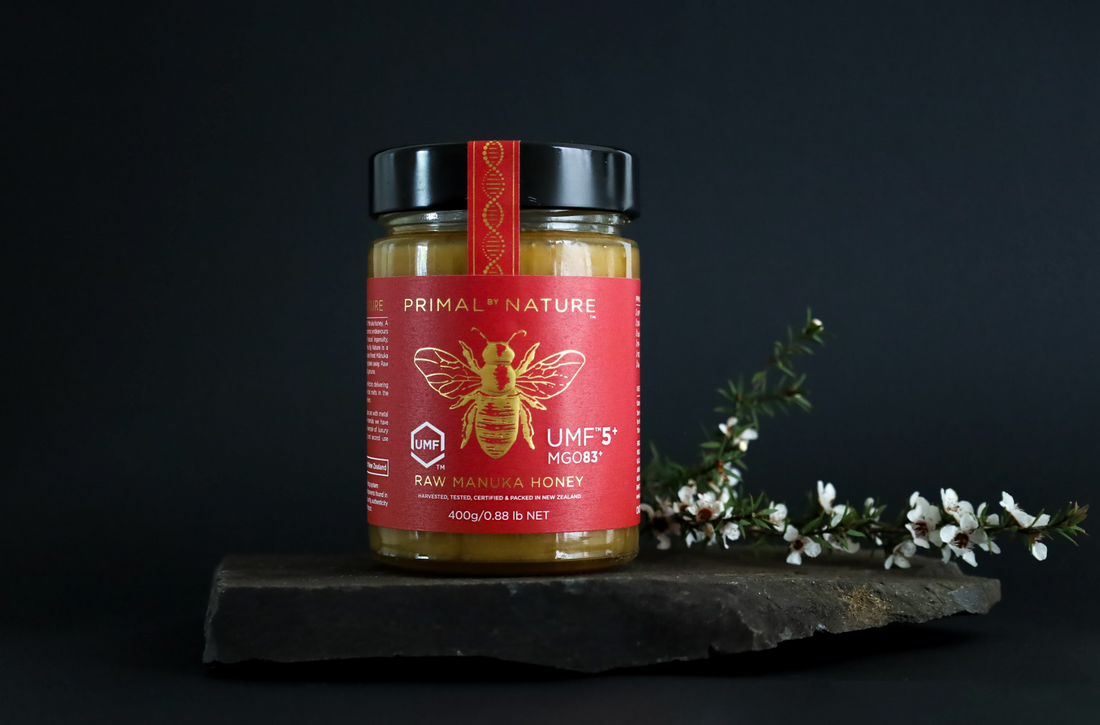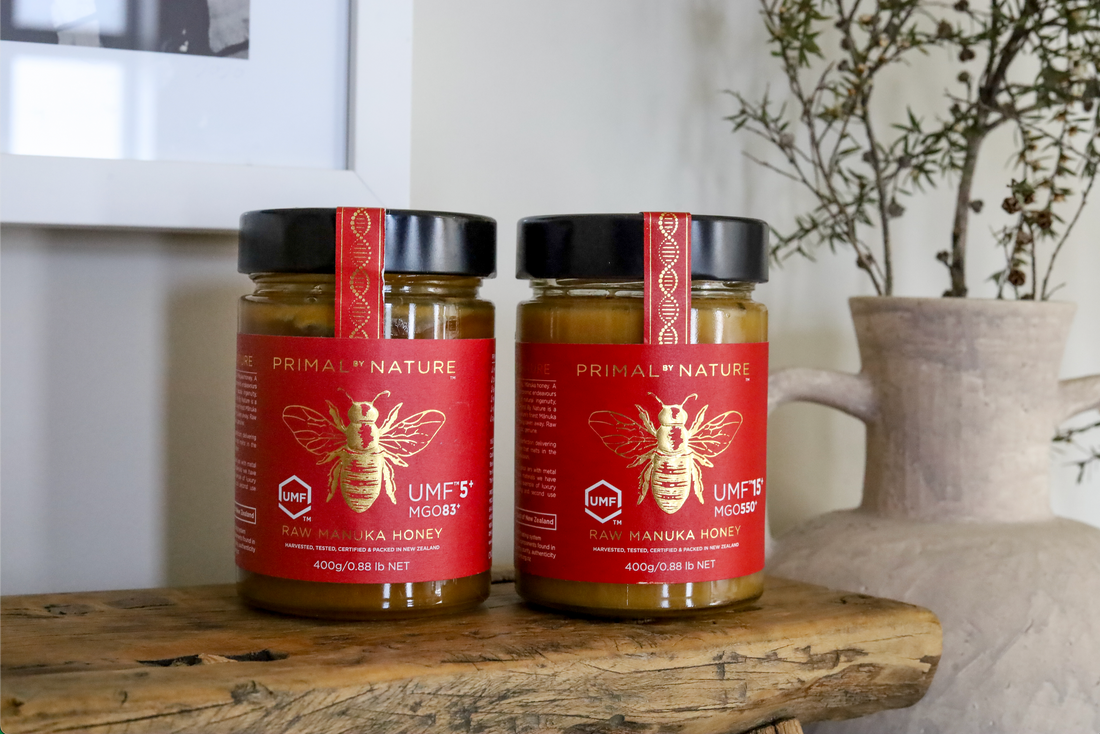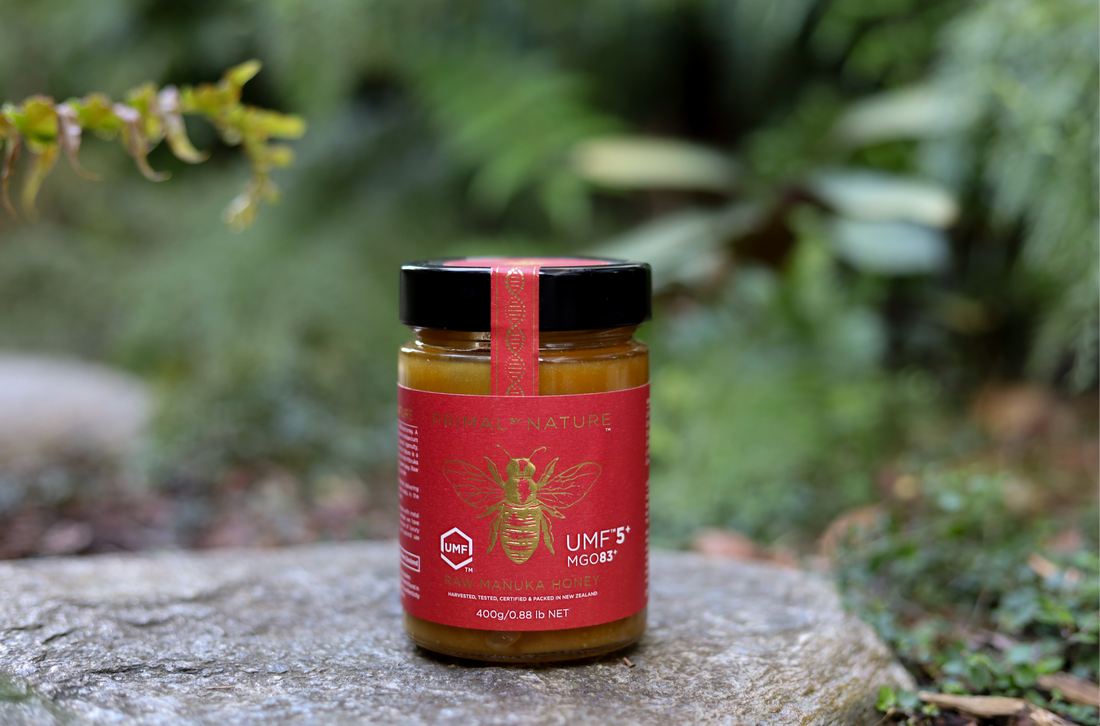If you have ever seen a product that proudly displays a fern-shaped tag with "Made in New Zealand" on it, you may be wondering what it represents. This fern tag is a symbol of quality and authenticity, and it has become a well-known trademark associated with products from New Zealand.
If you’re interested in the native aspects of Mānuka honey, please read - ‘Is Mānuka Honey Native To New Zealand’.
In this blog, we will explore the history of the fern tag, what it means for products, specifically Primal by Nature’s monofloral Mānuka honey, and why it is important to retain this level of authenticity for Mānuka honey products.
The History Of The Fern Tag
The fern tag was first introduced in the late 1980s as part of a campaign to promote New Zealand-made products. At the time, there was a growing concern among New Zealand manufacturers that their products were being imported from overseas, and they were losing business to less expensive imports. To combat this, the NZ government launched a "Buy New Zealand Made" ad campaign, and the fern tag was created as a symbol of quality and authenticity.
The fern tag quickly became a well-recognized symbol of products made in New Zealand, and it has been used on everything from food and beverages to clothing, electronics, furniture and most importantly, pure Mānuka honey. In 2018, the fern tag was updated to include a new design, which features a stylized silver fern on a black background. You’ll find this same insignia on every jar of Primal by Nature - why? Because we only sell 100% pure New Zealand Mānuka honey.
For more information on genuine Mānuka honey, please read - ‘How Can I Ensure That I'm Buying Genuine Mānuka Honey?’
What Does The Fern Tag Mean For Products Made In New Zealand?
The fern tag is a mark of quality and authenticity for products made in New Zealand. To use the fern tag on their products, manufacturers must meet a set of criteria that ensure that the product is in fact made in New Zealand and meets certain quality standards. These criteria include:
- The product must be made or grown in New Zealand.
- At least 50% of the cost of production must be incurred in New Zealand.
- The product must be of a high standard and meet relevant quality standards.
- The use of the fern tag must be approved by the New Zealand government.
By meeting these criteria and displaying the fern tag on their products, manufacturers are able to distinguish their products from cheaper, imported alternatives and demonstrate their commitment to quality and authenticity.
Why Is The Fern Tag Important?
The fern tag is important for several reasons. First and foremost, it provides consumers with a clear indication that a product is made in New Zealand and meets certain quality standards. This is particularly important for products that are exported, as the fern tag helps to distinguish New Zealand-made products from similar products made in other countries.
The fern tag has ultimately become a well-known symbol of quality and authenticity for products made in New Zealand. By meeting certain criteria and displaying the fern tag on their products, manufacturers are able to distinguish their products from cheaper, imported alternatives and demonstrate their commitment to quality and authenticity. The fern tag is an essential tool for New Zealand manufacturers and a symbol of national identity and pride.
How Does The Government Ensure Monofloral Mānuka Honey?
As one of the rarest and most valuable export products in New Zealand, it’s understandable that the NZ Government has invested heavily in multifloral and monofloral Mānuka honey. In fact, the government takes Mānuka honey so seriously that they have even established their own scientific definition of what determines multifloral and monofloral Mānuka honey.
There are only a few items in New Zealand that are granted this now-iconic stamp. Considering this product can only be harvested in New Zealand, it’s understandable that Primal by Nature has ensured every jar showcases the Fern logo. As you can see from the requirements above, pure Mānuka honey would pass each checkmark with flying colours. The only hurdle to overcome would be the chemical requirements of Mānuka honey identification by MPI.
These chemical markers include:
3-Phenyllactic acid
2’-Methoxyacetophenone
2-Methoxybenzoic acid
4-Hydroxyphenyllactic acid
Presence of Mānuka pollen DNA
Primal by Nature - Sustainably Providing 100% Pure New Zealand Mānuka Honey
Primal by Nature can deliver Mānuka honey from the rawest and primal regions in some of the most remote New Zealand locations. We are your one-stop shop for a sustainable and natural solution. Our Mānuka honey comes in a range of UMF™ strengths.
All Primal by Nature Mānuka honey arrives at your door in recyclable glass jars regardless of the level of MGO or UMF™. We believe that our pure New Zealand Mānuka honey must be the best and should be available to consumers in the same eco-friendly packaging.
Primal by Nature eliminates the confusion surrounding Mānuka honey UMF™ grading systems and standards. As a result, you will be made aware of the different grades and be confident in buying a product that reflects an environmentally conscious brand.
Taking Mānuka honey to the next level, every Primal by Nature glass jar contains a potent primal burst of nature. To taste Mānuka honey of this stature is to embrace nature itself. So take a look at our extensive selection of Mānuka honey products and become one with nature.





